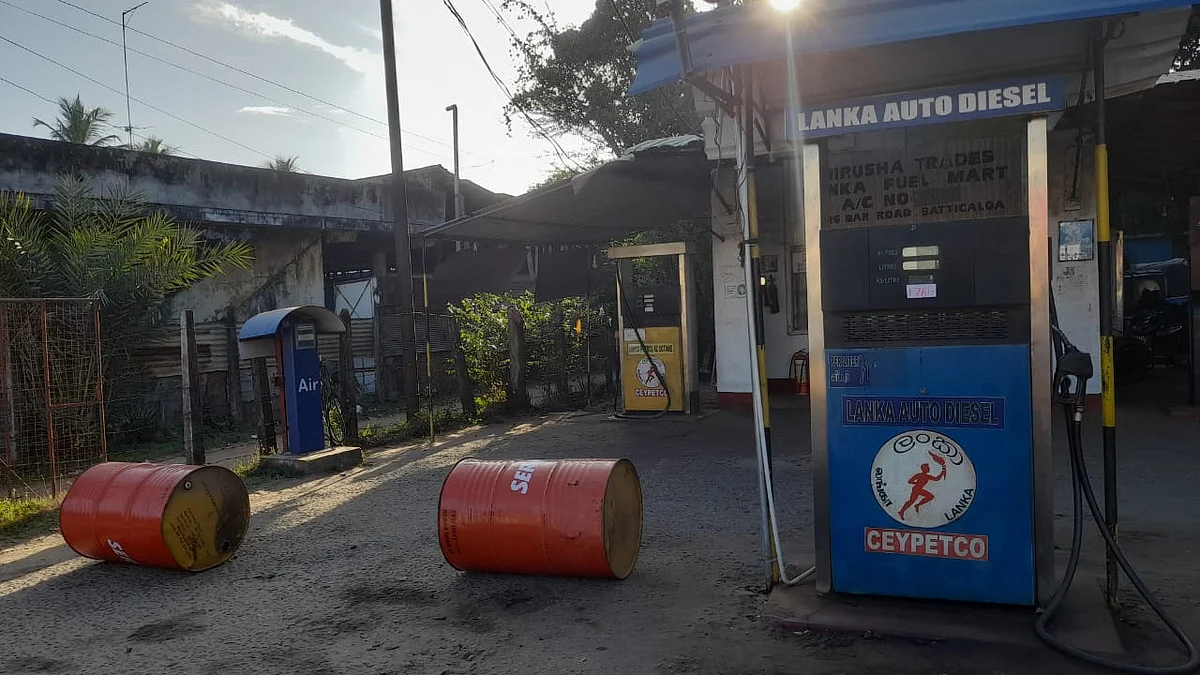Lanka’s slide from Singapore to Somalia
Sri Lanka was once the advanced among South Asian countries in terms of economy, literacy rate and the standard of living. Today, it’s one of the most vulnerable economies in the world

Sri Lanka was once the advanced among South Asian countries in terms of economy, literacy rate and the standard of living. Today, it’s one of the most vulnerable economies in the world.
“First they stopped the milk powder. Then limited the supply of fuel and now the electricity. We cannot sleep peacefully. When we wake up in the morning, we hear the news of new fuel price,” murmur the people in the country.
The country which was believed to become the Singapore or the wonder of Asia, gradually becomes South Sudan or Somalia. There is no food, fuel or electricity in the country. The recent economic crisis has devastated this small island nation and the condition is worse than that of the time of the civil war. People are in queues for fuel, cooking gas, and even for the necessary items such as sugar, flour and milk powder. Two senior citizens have already died while waiting in the queue at the filling stations.
“This is our term exam time and it is the first time in my life I use the candle light to study. I’m never used to this. It’s sweating and mosquitos are biting. I am unable to concentrate on my studies,” says Joanna, a grade 6 student from a leading school in Batticaloa district. Some examinations have been postponed due to lack of papers and ink in the country to prepare question papers. To purchase these from outside, the country doesn’t have adequate dollars. Paper shortage not only affected the education sector, it also affected the print media. Two major Sri Lankan newspapers -- The Island, an English daily, and Divaina, a Sinhala version of it --suspended their print editions. Others also reduced the pages in their dailies.

The country is suffering from the shortage of foreign exchange reserves and as a result it is unable to import essential commodities such as fuel, food and medicine. Insufficient amount of fuel led to disruption of electricity for 10 hours everyday. It affected not only the household but also many industries in the country. According to Reuter’s estimation, Sri Lanka faced a 70 percentage drop in foreign exchange reserves in two years. This led to the devaluation of Sri Lankan rupees.
“We needed to wait in ques for long hours to get diesel. They fill diesel only in vehicle tanks. We needed it for our electricity generator and they asked for a request letter from the hospital. After giving the letter only they gave us diesel in cans,” says Ravi, the supervisor of a private hospital in Batticaloa. The military posted soldiers with arms in each filling station of the country to oversee the distribution.
Daily wage earners are the most affected and they are forced to do multiple jobs to make the ends meet. Out of 22 million of the total population, the Central Bank of Sri Lanka identified 5 million families as low-income households. During Covid-19 lockdowns, the government paid them Rs.5000 as aid for each family. People from northern Sri Lanka have started entering into India illegally using fishing boats since they can’t bear the cost of living in their country.
As a solution to this economic crisis, the Central Bank printed rupees and the result was the skyrocketing inflation rate of 17.5% in February. It has crippled the Sri Lanka’s economy further. To tackle its external debt alone, Sri Lanka needs USD 7 billion this year. However, the current foreign reserve of the country is only USD 2.3 billion. In order to overcome this currency crisis, the island is seeking for more loans from India, IMF, World Bank and again from China and Bangladesh.
India has already given a credit line of USD 1 billion to import essential items such as rice, wheat flour, pulses, sugar and medicines. Talks are underway to get another USD 1.5 billion from India. The Finance Minister Basil Rajapaksa’s recent New Delhi visit made this possible. Sri Lanka has also approached China for a credit line of USD 1.5 billion and a separate loan of USD 1 billion. The government is also seeking another USD 250 million from Bangladesh and Bangladesh has agreed to extend the repayment time for the previous loan. Sri Lanka also has plans to hold talks with the IMF for a rescue plan and to seek support from the World Bank to restore the economy of the country.
Sri Lanka is a strong tourism-based economy which brings the country billions of dollars. While the country was recovering from its war-torn economy, the Easter Sunday blast affected its tourism sector and crippled its economy. While recovering from it, the pandemic hit and affected the backbone again. Now the Russia-Ukraine war also contributed to this as the oil prices went up in the world market.
Though the government blame the global uncertainty as the root cause of these problems, it’s obvious that the major reason is the poorly planned investment measures of the previous government. Former President Mahinda Rajapakse invested a huge amount of money in Hambantota harbour and the Mattala airport but the return is less or nothing. He could have better invested in renovating the existing ones.
Today, while the country is bearing all the previous debts, we are going for the new ones. It shows how Sri Lanka is trapped in the vicious circle of debt.
(This was first published in National Herald on Sunday)
Follow us on: Facebook, Twitter, Google News, Instagram
Join our official telegram channel (@nationalherald) and stay updated with the latest headlines